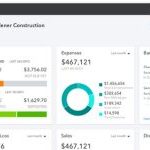New compliance policies, evolving technologies, and a greater need for more significant long-term retention and data analytics play a crucial role in data management. It’s important to note that there are two main reasons for making data planning a priority in organizations and companies today.
The first reason is that the vast data volumes are created every day, which will significantly increase, and they’ll undoubtedly continue to grow exponentially. Secondly, the time needed for organizations to safely store all their data has increased drastically as well.
Therefore, it was necessary to implement more stringent regulatory and compliance policies globally. These policies require data retention for much more extended periods.
Managing data becomes much more difficult every day because the speed, frequency, and volume of incoming data continually increase. One critical aspect of data management is data matching, which helps maintain data quality by identifying and linking related records across datasets. For a full overview of data matching and its importance in data management, consider researching best practices and techniques in this area. Fortunately, Softpullsolutions offers concrete data management plans because, without a data management plan, your organization will probably become disconnected or suffer from under-utilizing vital data.
Before you learn the details about the important ways and rules on how and why you must manage your data correctly, you also need to understand data management details.

What Is Data Management?
Data management is a straightforward process of acquiring, storing, protecting, validating, and using data in a reliable, meaningful, and accessible manner.
Regardless of the industry, your organization houses a considerable amount of fundamental data. Without a solid data management plan, you may miss insights that can be crucial for your organization in terms of profit increase and coming up with better decisions.
Why Is Data Management Vital For All Businesses?
Data is the backbone of all dynamic organizations since it can help you keep existing clients and it’ll also help you draw new ones in. Moreover, you’ll significantly improve your customer service, tweak your marketing, and uncover various sales trends. In any case, to successfully take advantage of your data, you’re required to manage your data.
Here are more advantages that data management brings:
- You’ll be much more productive since data management is a team sport, making it much easier for you and your employees to find, understand, and share information between them and your customers.
- It saves money by making your organization more productive and also reduces the costs. Additionally, your employees won’t lose time searching for the data they need or duplicating their efforts.
- Since data management showcases trends, you can respond to various queries much quicker, helping you act much sooner than your competitors would.
- Helps mitigate all security risks by reducing significant security breaches. Data security is an essential element of the overall data management because it allows you to lock down all your data, keeping it safe.
- You can make more precise decisions because data management allows you and your employees to react to all the up-to-date data.
Figure Out Which Areas Require Improvement
Comparing these suggestions with your own data practices will help you understand how to change the areas that require improvement.
- Process Documentation
Document all work processes while managing your data in a README file.
It’s also crucial that you follow up on all standards from your field. That way, you’ll document all contextual information regarding your data, which is known as metadata.
- Using The Right Format Is Vital
In the perfect setting, all information should be available in a non-restrictive and open arrangement. To get an excellent overview of open formats, use the Open Data Handbook. Also, avoid saving files in an Excel spreadsheet but rather save them in CSV format. Additionally, you can save them as a text file instead of saving them as an MS Word document.
- Use The Best Storage Solutions
Indiana University (IU) offers a few choices for data storage. It allows you to easily store all your data on the cloud via IU Box, which gives phenomenal collaborative and versioning functionalities. For large or very sensitive data, you can also use the Scholarly Data Archive.
Always back up all your data instead of relying solely on your hard drives. That way, you’ll keep all your data safe. Additionally, note that any of these options can’t guarantee long-term data preservation. To preserve all your data long-term, you should add completed data sets directly to the IU institutional repository known as IUScholarWorks (IUSW).
- Accessing And Sharing Your Data
Opening up all your data isn’t suitable for analysts. Therefore, those whose research is completed should store the data in IUSW so they’d promote full access and visibility to their data.
Start Implementing The Changes

- Taking Full Ownership Of Your Data Management Is A Must
Numerous organizations employ chief data officers (CDOs) who’ll help manage data as an organization’s asset. Make sure to re-shape your business approach to data strategy by appointing selected individuals who’ll take full responsibility for governing the data.
Only then, you’ll finally start taking full ownership of your data. This means that you’ll also have accountability, which provides different processes and procedures that’ll help govern your organization’s data usage. All of these allow you to begin using the data as an asset, ultimately delivering your business success.
- Creating A Connected Data Base Is Essential
Do you know how your organization collects, processes, consume, and store data throughout your business? It’s entirely possible that data management will become decentralized without any real data management strategy set in place to support decentralization while your organization grows further. This is something that makes the data management process quite tricky. Connecting all systems that aren’t connected is a must, as well as standardizing data architecture. Only then can you start aligning your data use to your business’ strategy.
When trying to utilize or retrieve their data, organizations that work with fragmented legacy systems can come across insurmountable gaps. Moreover, they risk non-compliance with new regulations since they can’t ensure the needed transparency for presenting on how all their data was acquired in the first place.
You have several different options. You can either replace your existing system with a new one, link your existing systems, or choose the combination of the two. The most important segment is that your data system(s) are supportive of data visibility and coherence and deduplication. Then, you can use archive technologies that’ll allow you to secure more data, while you’ll be storing only what you need. Still, it requires flexibility so that it could support your organization’s future growth.
- Metadata Management
Metadata provides various information on your primary data, like when it was created, acquired, or revised. Moreover, you can get information about the primary data’s location and its format type. Creating consistent business data infrastructure and managing your metadata helps with accessing, referencing, and consuming business data.
Organizations that are missing some fundamental facts like who owns some specific information or how relevant this information is to the business and how much is this information essential will be able to gather all these facts thanks to consistent business data infrastructure. Therefore, managing your metadata is quite helpful since you can classify and map information, but you can also assess its value. By doing so, you’ll be able to prioritize and protect your valuable data.
- Data Delivery Planning
Once you have full control over your data, there’s a method that allows you to format and deliver the data for optimum use across your entire organization. This is very important if your company uses e-commerce platforms and several Customer Relationship Management (CRM) and Enterprise Resource Planning (ERP) technologies.
Data delivery allows you to place vital information into the appropriate systems, making it available to the right people. Moreover, businesses will soon be required to provide detailed information on the management, protection, and acquisition of all their data. This means that you’ll need systems in place that’ll allow users to perform business actions that are solely based on data-driven insight.
- Adoption Of Consistent Data Governance Policies
When you finally have your data platform in place, you’ll be able to work on data governance. To do so, you need to implement consistent company policies around data use and handling. These policies should cover physical, as well as cloud and virtual environments.
Moreover, all your information must have a classified control set regarding distribution, access, deletion, as well as retention.
Development Of A Data Management Plan
To be able to develop your data management plan, you must consider your goals. Use all aspects of both defensive and offensive strategies, but make sure to include these critical five data management segments. All the details of your data management plan solely depend on your company type.
- Evaluation
The first step of the way is to evaluate how your data management currently works and to identify any potential issues or shortcomings in your plan. In case you don’t have a plan, you should come up with a wish list of all the things you’d like to have, like role-based dashboards, predictive analytics, or real-time data access.
Once you’ve come up with the list, you need to look at data management systems. Investing in a data management system will undoubtedly increase your business’ productivity as it’ll make your data consistent and easily accessible.
- Data Management Systems
The second step is to consider data management systems that are compatible with your existing software, which includes accounting systems, marketing databases, and CRM systems. By doing so, you’ll be able to obtain information from essential business systems. This allows you to analyze this information, and you’ll be able to make more informed decisions.
- Choose Security Features
The third step is to be careful when you consider which security features to integrate into these platforms. Moreover, you need to know if it’s easy to integrate data from several different sources and if it’ll be easy or not to access your data.
In case you feel overwhelmed by all this, make sure to consider hiring a professional data manager. Every professional data manager is capable of analyzing and tracking your data. Also, they can fine-tune your data management plan, which allows you to have more focus on your business.
- Secure Your Data
Regardless of the data management strategy that you chose to begin with, all your data must be secured and protected. Data security and privacy must always be a centerpiece of your overall data management plan. This includes encrypting data at rest and in transit, security educating your employees, and establishing the best practices.
Making Your Data Analytics-Ready Is Vital
Having analytics-ready data is a must. By following these few methods, your data will be ready for analytics.
- Simplify The Access To Emerging And Traditional Data
Having more data usually means having better predictors. Therefore, when it comes to the amount of data your data scientists and analysts can get, bigger is actually much better. Having access to more data allows them to determine which data is the best one, allowing them to predict a possible outcome.
- Building Quality Into Existing Processes By Scrubbing Data
Having a data quality platform that’s designed around the best practices of data management allows you to incorporate data cleansing directly into the data integration flow.
Additionally, if you wish to improve performance, you should push processing down to the database. Moreover, it’ll entirely remove all invalid data solely based on the utilized analytic method.
- Shape Your Data Using Only Flexible Manipulation Techniques
There are several things required to prepare your data for analytics. Some of these things include de-normalization, transforming, merging, and, in some cases, aggregating all your source data from several tables into a single, comprehensive table. This table is known as the Analytic Base Table (ABT).
Statistical Analysis System (SAS) can simplify data transposition with graphical and very intuitive interfaces created solely for transformations.
- Share Your Metadata Through Analytics Domains
A recurrent metadata layer allows you to consistently repeat the preparation processes of your data. Additionally, it provides you with lineage information on the data preparation process, promotes collaboration, and makes model deployment much more straightforward. You’ll notice much faster cycle times, more accurate models and flexibility, better productivity, and transparent, auditable data.
Final Thoughts
Data management is an essential element for running your organization smoothly. It helps increase business productivity, it saves money, and, most importantly, it allows you to access incredible amounts of data to achieve better results.
Moreover, data management is beneficial with CRM, and it also provides you with insight into more in-depth data analytics.






